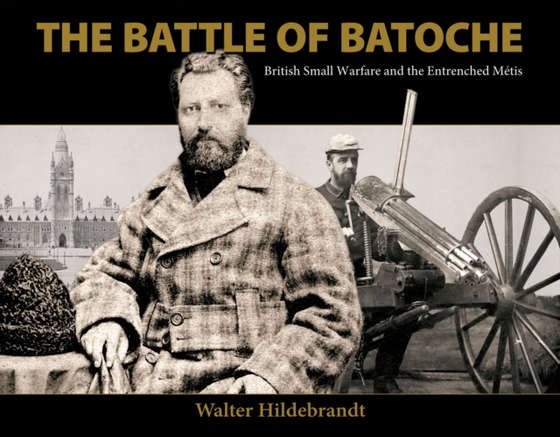
Battle of Batoche e-bog
196,23 DKK
(inkl. moms 245,29 DKK)
The Battle of Batoche is the best-known confrontation between Metis and British soldiers in the Northwest Resistance of 1885. It remains one of Canada's most emotion-laden memories, chronicling an historic event equivalent to the 1863 battle of Gettysburg. After Batoche, everything changed for the Metis people and for Canada as well, especially in Quebec. The battle decided the future for the M...
E-bog
196,23 DKK
Forlag
Talonbooks
Udgivet
15 juni 2014
Længde
144 sider
Genrer
History of the Americas
Sprog
English
Format
pdf
Beskyttelse
LCP
ISBN
9780889227187
The Battle of Batoche is the best-known confrontation between Metis and British soldiers in the Northwest Resistance of 1885. It remains one of Canada's most emotion-laden memories, chronicling an historic event equivalent to the 1863 battle of Gettysburg. After Batoche, everything changed for the Metis people and for Canada as well, especially in Quebec. The battle decided the future for the Metis people mixed Cree or Anishinaabe and Scottish or French ancestry who populated the Red River region known today as modern Manitoba, North Dakota, and Minnesota. The battle was the climax of the federal government's efforts to control the native and settler population of the West. It also changed attitudes in Quebec, which saw widespread outrage over the hanging of rebel leader Louis Riel following the battle; distrusting the Conservative government, French-speaking Quebecois began to feel safe only in Quebec and consequently limited theirexpansion into western Canada.Walter Hildebrandt's chronicle of the battle, first published at the centenary of the Northwest Resistance in 1985, eloquently revisited and analyzed the strategies of both sides. This redesigned new edition adds sidebars and extended captions, as well as numerous maps and photographs that offer detailed description of the fateful battle. Sidebars focus in detail on topics related to the battle, including Louis Riel and Gabriel Dumont as leaders of the Metis resistance; nurse Kate Miller, Canada's Florence Nightingale; Batoche as the site of the first-ever battlefield photos, taken on horseback during the battle; the Gatling gun as evidence of the newly industrial nature of warfare; and zareba warfare and riflepit trenches as foreshadowing of the trenches of World War One, among other topics.Recent historiography, in particular, on Metis and First Nations involvement, including the role of women and children, is incorporated into the text, and notes and bibliography are updated.Foreword by Jean Teillet, great-grandniece of Louis Riel.
 Dansk
Dansk

